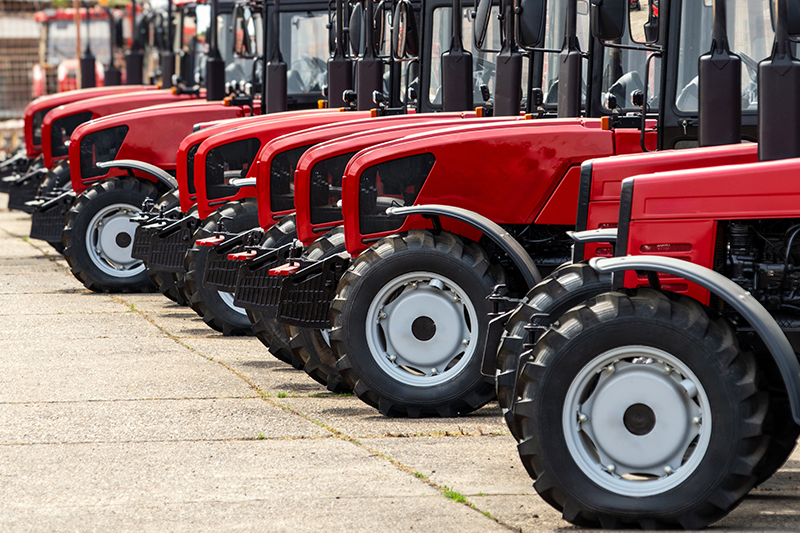Agriculture is undergoing a remarkable transformation in the modern era, thanks to the fusion of traditional farming practices with cutting-edge technology. Agriculture Technology, or AgTech, has led to unprecedented advancements in farm equipment and technology, helping farmers automate some of their more time-consuming tasks, help with resource allocation, and in the long term, save farmers money while still generating high crop yields. While the introduction of robotics and AI into the agriculture sector has introduced a lot of different innovations, from farming options in urban areas to utilizing drones, modern AgTech is making farm equipment more efficient.
Automation
Smart technology, assisted by AI, is helping farmers automate menial tasks. What used to eat up hundreds of hours and require a lot of manpower before can now be done automatically with a machine, freeing the farmer and his staff to complete other jobs that need to be done or focus on more pressing matters. Companies such as John Deere have already jumped into the robotics scene, with their first fully automated tractor and tiller coming soon.
There are a lot of benefits that come with automation, such as helping farmers address staffing issues. According to Plug and Play, the cost of labor makes up for over 50% of the expenses of growing a farm. Combined with the labor shortage, being able to automate some of your processes could go a long way in freeing up both money and time to focus on growing your farm. Automation also allows for higher crop yield, as we will touch on later when we reach precision.
An example of how farm equipment is helping automate farming, other than self-driving tractors, is the Carbon Laserweeder. Using software that can identify over 500 million weeds across 40 different crops, the equipment uses precision lasers to burn the weeds and leave the crop untouched, saving farmers the time and grueling manual labor it usually takes to hand-weed fields (Here is a video to see it in action, it’s really cool!). It is also a cheaper and healthier alternative to using herbicides.
Precision
Beyond equipment and robotics, AI and software are helping make farm equipment more precise. It is a valuable market that only continues to grow, with a report by Grand View Research, Inc. predicting that the precision agriculture market will reach $43.4 billion by 2025. As farmers look to grow their operations and take on bigger crops, these new innovations can become an invaluable asset to help farmers regulate resources, assist in tasks (such as the Laserweeder being able to identify types of weeds instantaneously), and maximize crop yields.
An example would be Clarity™ by Precision Planting, a planter upgrade that acts as an advanced flow and blockage monitoring system. The upgrade allows farmers to see more exact, high-definition details when it comes to the flow of seed and dry fertilizer. Clarity improves overall performance and was built to be compatible with sensor equipment farmers already have.
Another example is Farmwave, a camera-based upgrade for combines that helps reduce crop waste by monitoring loss autonomously and informing the farmer why and where it’s happening. Early users of the upgrade reported saving up to $8,000 worth of crop yields thanks to the software.
Drones
Farms are already harnessing the power of innovative technology and drones. As of 2023, the agricultural drone market is at $3.807 million and expected to grow to $14.237 million by 2033 with a CAGR increase of 14.1%, according to Fact.mr. They are increasing in popularity thanks to their versatility for small and large farms alike. Drones can fill numerous functions, from monitoring field conditions to fertilizer and seed distribution, helping automate tasks that used to take a lot of time and money to accomplish. Most recently, drone and machine learning AI technology are merging to help with crop monitoring.
A cool application that shows off the potential of both AI and drone tech would be its seed distribution and planting technology. In an article by Evening Star, drone technology was highlighted in efforts to replant depleted tree populations. Now it’s estimated that with ten drones and two human operators, 400,000 trees could be replanted a day. If, at this stage, drones with human operators are able to accomplish this, it’s not hard to imagine the application to agriculture and field planting.
—
As technology continues to evolve and innovate, farmers can streamline their operations and make the most of their time and money. Whether it’s purchasing new or upgrading their existing equipment, farmers are given more opportunities to scale their farms and increase crop yields.
Whether you’re looking to sell your old equipment or purchase used machinery for your fields, DPA Auctions is here to help! Our dedicated team is ready to help you evaluate and sell your equipment and get you the money to put towards some new farm machinery. Our approach is rooted in building strong relationships and treating our clients like family, with your success as our top priority.
Ready to make the most of your equipment investment? Reach out to us today and discover why DPA Auctions is the premier choice nationwide for selling your equipment. We look forward to showing you the difference we can make for your auction experience.





